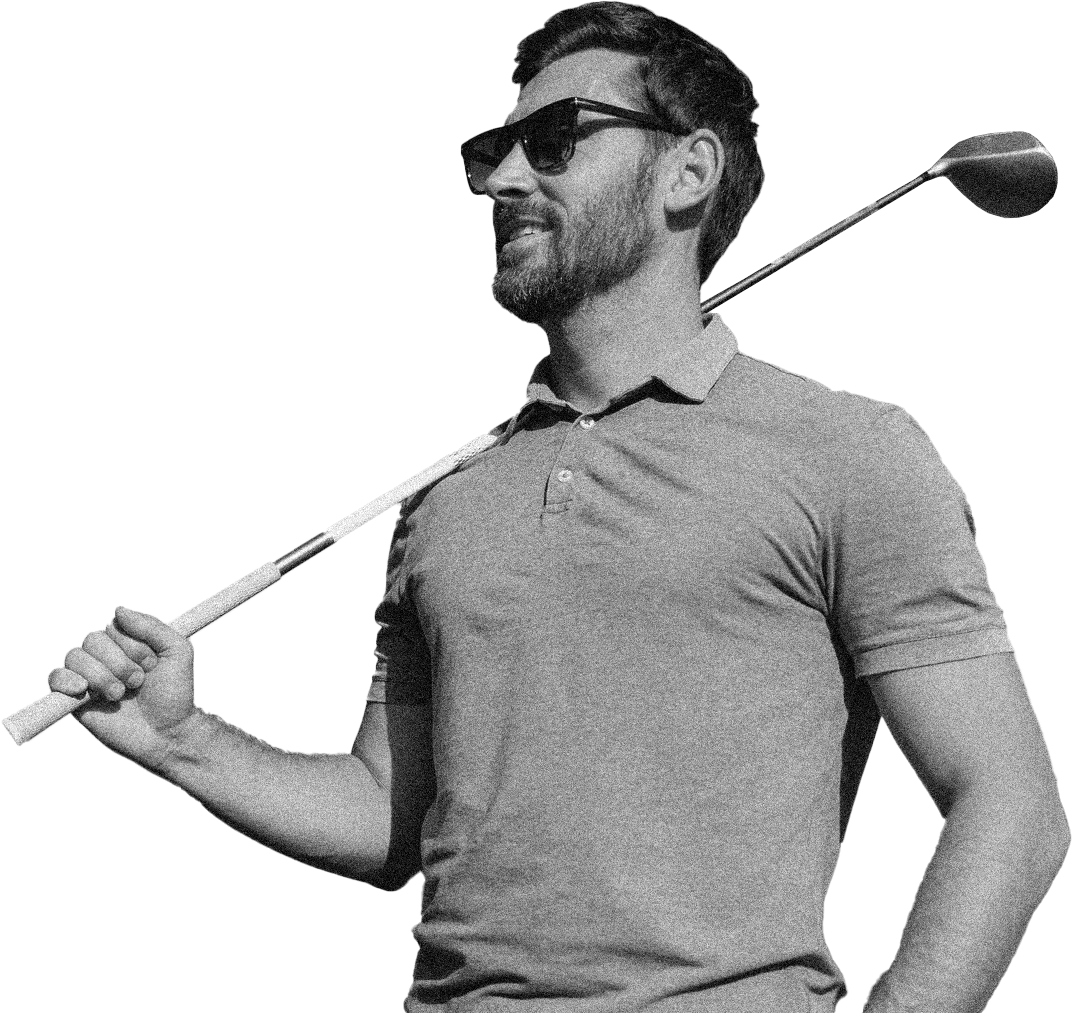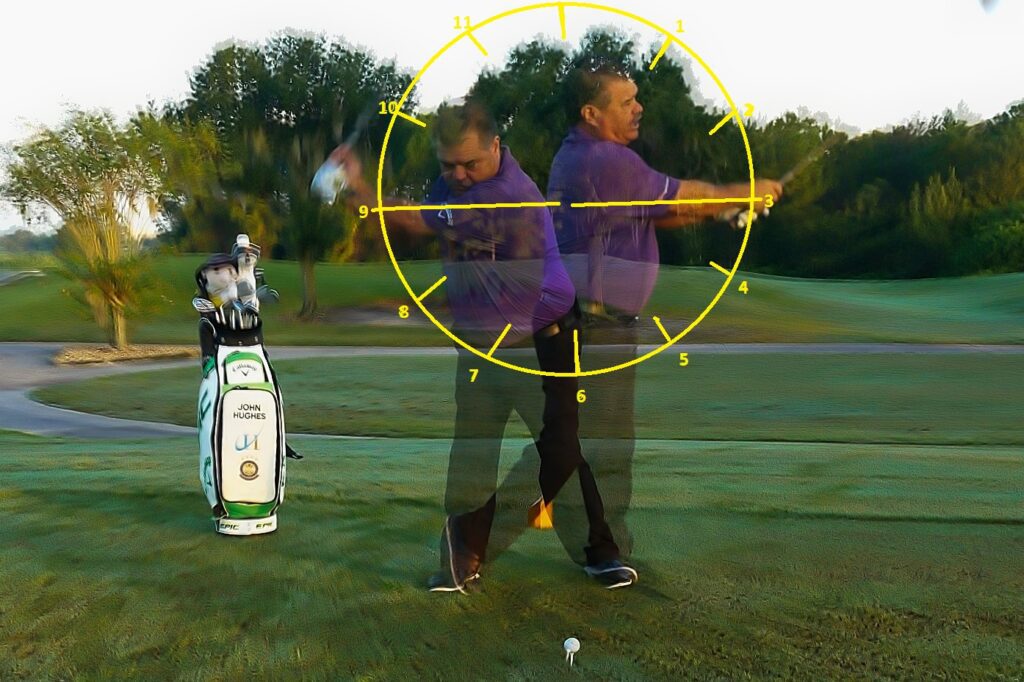Impact Position
Working the “9 to 3 Shift” as You Practice
A great Impact Position is a feeling to behold at all skill levels. It’s the nirvana all golfers constantly search for. Yet, when a client comes to me in search of a great impact position, they’ll inevitably work any drill I provide them as if they are seeking more distance. Performing any drill designed to create a great impact position requires preciseness. In turn, meaning you slow down to understand the process. At normal or increased speed or intensity, you’ll exacerbate your issues that plague your desire of achieving a repeatable and efficient impact position. That’s where the “9 to 3 Drill” comes in.
A great Impact Position requires certain things to happen. Between the club face and the golf ball. In addition, a great impact position requires the golfer to perform at a consistent tempo. Doing so allows the body to balance the speed necessary to place the club in the best conditions possible at impact. In addition, delivering the maximum amount of speed the body can balance while making a golf swing. Let’s explore a ‘working man’s” drill that highlights a great impact position. The 9 to 3 Impact Drill.
Working a Shift, Not Positions, to Create a Great Impact Position
We commonly think of “9 to 3” as clock positions when it comes to the golf swing. Because of inertial momentum and most golfers’ inability to be as precise as they’d like, I tend not to speak of 9 to 3 as positions. I like to relate the phrase to time, such as working a scheduled shift. Doing so focuses the efforts on creating a good tempo versus trying to achieve an exacting position. Don’t get me wrong, positions are important. But more important is the ability to create a good tempo that can repeat a great impact position throughout a round of golf.
When focusing on “time” with the 9 to 3 Drill, I like for each golfer to feel a “shift” as they move the club through the ball. Commonly referred to as a weight shift, this movement must go “through” the ball, not at the ball. To do so, the release of the trail side of your body towards the target is required to achieve the most important position to achieve a great impact position.
Great Impact Positions Lean Forward
All clubs are designed with the handle slightly ahead of club face. A great impact position at the very least replicates that position, if not amplifies it. The 9 to 3 Drill provides the feeling of “forward shaft lean” when performed with tempo, not speed, in mind.
How does forward shaft lean occur? Simply put, it is the product of the lower body deriving power from the ground. The lower body transfers the power through the upper body to the club in a synchronized fashion. With the lower body and core leading the way, the upper body and club have no other choice but to follow. With the 9 to 3 Drill, the synchronized transition in the back swing is more easily accomplished. In turn, coordinating forward shaft lean for a more solid feeling of impact.
You can create forward shaft lean with just the upper body. However, using nothing but the upper body can lead to pulled shots. Especially if you don’t time the transition of the downswing correctly with the arms and hands.
Great Impact Positions Typically Produce a Balanced Finish
If you’re a golfer who can’t pose on their front foot after a shot is executed, your in trouble/ Chances are the pre-shot balance of your set up position is contributing to the poor impact position, as well as the poor finished position. Without good balance through impact, you can not achieve a balanced finish.
By doing the 9 to 3 Drill in slow motion and not hitting a golf ball, you can heighten the awareness of your balance in the key positions of the swing. Focus upon your feet, and how they interact with the ground creating the leverage you need throughout the swing. You can focus on the balance it takes to transition the club. Also, you can become more aware of the balance it takes to create a powerful impact position. And all this leads to how continued motion through the impact position prepares you to hold a well-balanced finished position.
Distance is not the Issue
When you perform the 9 to 3 Drill, distance is of ZERO value. I repeat, ZERO! Distance will come with the repeatability of your great impact position.
Training for distance or speed is a completely different training technique. Speed training requires your fitness level to perform at its peak as you engage the parts of your body that produce speed. Training for speed is similar to a high intensity fitness work out at your health club. A great impact position is not necessarily the first priority when training for speed. Within the beginning stages of speed training, the first priority is not to hit a golf ball accurately, just with speed. Where the ball comes down is of little to no consequence when you begin speed training.
The 9 to 3 Drill is Like Learning to Walk before You Run
Learning great impact is similar to how you learned to walk when you were small. You walk slowly at first. And your equilibrium develops and becomes comfortable with balancing walking speed, you in turn walk faster.
When performing and executing the 9 to 3 Drill, the importance is “gearing down” your swing so you have a chance of improving your impact position. You can perform this drill too fast when you’re concentrating on speed and distance. And the drill’s value decreases to ZERO! By working the drill slowly at first, you’ll allow your brain and body the energy to understand what a great impact position should feel like. As this feeling becomes more comfortable, your equilibrium learns to dynamically balance the speed of the swing, increasing speed as the balance becomes more secure. When you make swings with the 9-3 Drill too fast, the ball will fly off line, have excessive curvature, and inconsistent initial trajectory.
Save Your Round
The 9 to 3 Drill can also be used in the middle of your round to save the day. If you’ve ever experienced a situation where you could not put a ball in play, this drill can make a huge difference to get the wheels back underneath your game.
During a round, find a place to practice this drill without disrupting play. Gear it down as you rehearse it. When you step to the ball, you’re attempting to feel the tempo of the drill. Not the positions of the drill. You can learn how to accomplish this by watching the accompanying video tip below.
Conclusion
If you’re looking to control your ball flight, working on face control is a must. And the 9 to 3 Drill allows for you to do both. Control the face of the golf club at impact so you ball flies straighter and with more potential for distance, with less energy. Why not use the 9 to 3 Drill to create a better impact position for your game?





